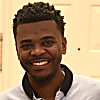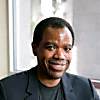Chromosomes in the cloud: Building a scalable genomic matching algorithm
Upcoming articles

Go to the next featured series slide
Go to the previous featured series slide
Related content
Building efficiency within teams


12 Jul 2023
Article
Building efficiency within teams

Ines
Sombra

Ines
Sombra
Velocity vs reliability


12 Jul 2023
Article
Velocity vs reliability

Ines
Sombra

Ines
Sombra
End of hyper-growth


12 Jul 2023
Article
End of hyper-growth

Ines
Sombra

Ines
Sombra
Impact of AI coding on leadership and teams


12 Jul 2023
Article
Impact of AI coding on leadership and teams

Ines
Sombra

Ines
Sombra
Host outro

10 Nov 2022
Article
Host outro

Taylor
Poindexter
Host outro

10 Nov 2022
Article
Host outro

J. Bobby
Dorlus
Host outro

10 Nov 2022
Article
Host outro

Phil
Calçado
Integrating an expert solo developer into a development team
.png)
12 Oct 2022
Conference session
Integrating an expert solo developer into a development team
.png)
Theresa
Robinson
Join us for the LeadDev New York 2022 Meetup
26 Aug 2022
Conference session
CONTENT SPONSORED by CODE CLIMATE
Join us for the LeadDev New York 2022 Meetup
The role of data in green software engineering

02 Aug 2022
Conference session
The role of data in green software engineering

Simon
Müller
There’s no “I” in learning from incidents.

06 Jul 2022
Conference session
There’s no “I” in learning from incidents.

Vanessa
Huerta Granda
Navigating parental leave as a senior engineering leader

06 Jul 2022
Conference session
Navigating parental leave as a senior engineering leader

Iccha
Sethi
Practical additive hiring for any team

06 Jul 2022
Conference session
Practical additive hiring for any team

Dan
Johnson
Getting to know you, Getting to know all about you: A highlight reel of team fun
 (1).png)
06 Jul 2022
Article
Getting to know you, Getting to know all about you: A highlight reel of team fun
 (1).png)
Allison
McMillan
Towards global and human-centered explanations for machine learning models

06 Jul 2022
Conference session
Towards global and human-centered explanations for machine learning models

Carla
Vieira
Building effective engineering teams; lessons from 10 years at Google

06 Jul 2022
Conference session
Building effective engineering teams; lessons from 10 years at Google

Addy
Osmani
Stop! Strategy time! (or are we really stopping?)

06 Jul 2022
Conference session
Stop! Strategy time! (or are we really stopping?)

Lena
Reinhard
Career vectors - CTO flavors: Mixing & matching skillsets

06 Jul 2022
Conference session
Career vectors - CTO flavors: Mixing & matching skillsets

Meri
Williams
Influencing organizational change without hurting your day job: a playbook

06 Jul 2022
Conference session
Influencing organizational change without hurting your day job: a playbook

Matt
Newkirk
How a Year in engineering leadership has made me a better individual contributor
_0.png)
06 Jul 2022
Conference session
How a Year in engineering leadership has made me a better individual contributor
_0.png)
Kristen
Foster-Marks
Debugging Engineering Velocity and leading high-performing teams

06 Jul 2022
Conference session
Debugging Engineering Velocity and leading high-performing teams

Smruti
Patel
Organizational Change Through The Power Of Why - DevSecOps Enablement

06 Jul 2022
Conference session
Organizational Change Through The Power Of Why - DevSecOps Enablement

Nazneen
Rupawalla
Controlling Cloud Costs with Culture

06 Jul 2022
Conference session
Controlling Cloud Costs with Culture

Jesse
DeRose
You Can Write Devastatingly Effective Docs

06 Jul 2022
Conference session
You Can Write Devastatingly Effective Docs

Andrew
Hao
Trends in Cloud-Native Performance & Efficiency

06 Jul 2022
Conference session
Trends in Cloud-Native Performance & Efficiency

Melanie
Cebula
Leading as an introvert

05 Jul 2022
Conference session
Leading as an introvert

Nelida
Velazquez
Tackling the toppling tech talent pyramid: a radical challenge to building diverse teams

05 Jul 2022
Conference session
Tackling the toppling tech talent pyramid: a radical challenge to building diverse teams

Richard
Ng
Leading software teams with systems thinking

05 Jul 2022
Conference session
Leading software teams with systems thinking

Francisco
Trindade
Debugging debugging; why we must approach debugging differently

05 Jul 2022
Conference session
Debugging debugging; why we must approach debugging differently

Elinor
Swery
Bridging the Dev-Sec divide: Three tips for agile developers

05 Jul 2022
Conference session
Bridging the Dev-Sec divide: Three tips for agile developers

Luisa
Emme
Technical documentation - how can I write them better and why should I care?

05 Jul 2022
Conference session
Technical documentation - how can I write them better and why should I care?

Hila
Fish
Fight back against imposter syndrome

05 Jul 2022
Conference session
Fight back against imposter syndrome

Garance
Vallat
Transitioning from synchronous to asynchronous (and somewhere between)

04 Jul 2022
Conference session
Transitioning from synchronous to asynchronous (and somewhere between)

Michael
Tempest
Shifting left on security: Five steps to transformation
 16 mins
16 mins
02 Mar 2022
Article
CONTENT SPONSORED by STACKHAWK
Shifting left on security: Five steps to transformation

Jeremy
Goldsmith
Using coaching skills to grow compassion, empathy, and kindness
 12 mins
12 mins
16 Feb 2022
Article
CONTENT SPONSORED by AUTOMATTIC
Using coaching skills to grow compassion, empathy, and kindness

Nik
Knight
Becoming a successful change leader

26 Jan 2022
Workshop
Becoming a successful change leader

Lena
Reinhard
Supercharging your impact as an engineering leader

26 Jan 2022
Workshop
Supercharging your impact as an engineering leader

Suzan
Bond
Maximising team impact and efficiency: Engineering leadership in uncertain times

26 Jan 2022
Workshop
Maximising team impact and efficiency: Engineering leadership in uncertain times

Lena
Reinhard
Increase your velocity and optimise your team’s performance with DORA metrics


26 Jan 2022
Workshop
Increase your velocity and optimise your team’s performance with DORA metrics

Nathen
Harvey

Amanda
Lewis
Becoming a Manager of Managers

25 Jan 2022
Workshop
Becoming a Manager of Managers

Jason
Wong
18 Jan 2022
Conference session
Career Vectors - CTO Flavors: Mixing & Matching Skillsets

Meri
Williams
Learnings from 'The engineering leader’s guide to data-driven leadership'
.png)
11 Nov 2021
Article
CONTENT SPONSORED by CODE CLIMATE
Learnings from 'The engineering leader’s guide to data-driven leadership'
.png)
Ella
Morrish
Sunlight & Air: 10 Lessons for Growing Junior Developers
11 Aug 2021
Article
CONTENT SPONSORED by PEPSICO
Sunlight & Air: 10 Lessons for Growing Junior Developers
Adding to the List: How to Conquer New Technical Domains
 15 mins
15 mins
04 Aug 2021
Video
Adding to the List: How to Conquer New Technical Domains

Hina
Sakazaki
Break - 15 minutes
15 min
03 Aug 2021
Article
Break - 15 minutes
Welcome to LeadDev Live

 10 mins
10 mins
03 Aug 2021
Article
Welcome to LeadDev Live

Anjuan
Simmons

Danielle
Leong
Empowering your engineering teams through delegating and mentorship
 15 mins
15 mins
26 Jul 2021
Video
Empowering your engineering teams through delegating and mentorship

Rodney
Cobb
Building alignment across your websites and apps
13 Jan 2021
Article
CONTENT SPONSORED by PLATFORM.SH
Building alignment across your websites and apps
Plug in to LeadDev
Want to get regular updates on all things LeadDev? Sign up to our mailing list
To find out more about how your data is handled check out our Data Promise


